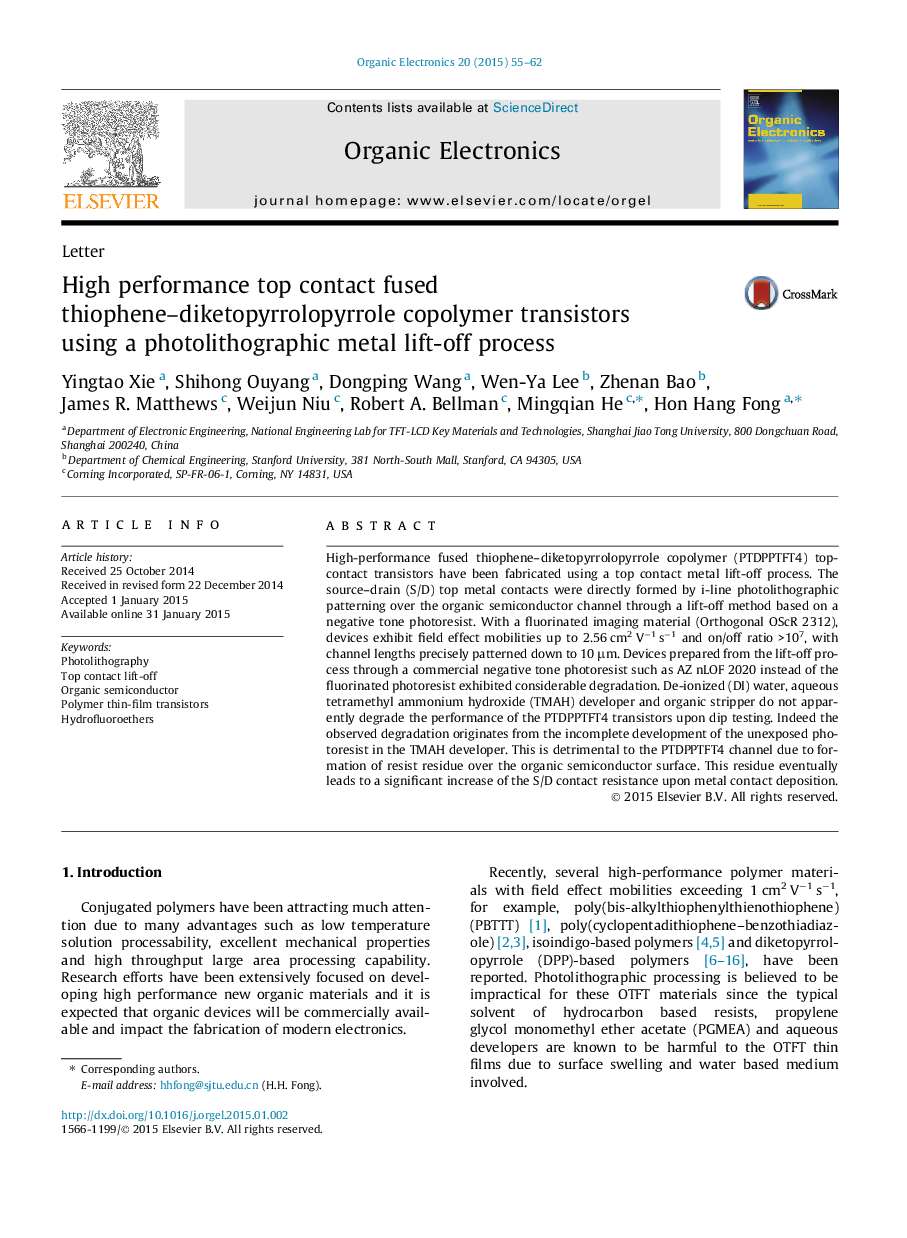| Article ID | Journal | Published Year | Pages | File Type |
|---|---|---|---|---|
| 1263729 | Organic Electronics | 2015 | 8 Pages |
•High mobility (>2 cm2 V−1 s−1) PTDPPTFT4 based OTFTs were prepared by metal lift-off.•Fluorinated negative acting photoresist is reliable for metal lift-off process.•Incomplete development of the unexposed photoresist leads to failure in the lift-off process using an ordinary negative photoresist.
High-performance fused thiophene–diketopyrrolopyrrole copolymer (PTDPPTFT4) top-contact transistors have been fabricated using a top contact metal lift-off process. The source–drain (S/D) top metal contacts were directly formed by i-line photolithographic patterning over the organic semiconductor channel through a lift-off method based on a negative tone photoresist. With a fluorinated imaging material (Orthogonal OScR 2312), devices exhibit field effect mobilities up to 2.56 cm2 V−1 s−1 and on/off ratio >107, with channel lengths precisely patterned down to 10 μm. Devices prepared from the lift-off process through a commercial negative tone photoresist such as AZ nLOF 2020 instead of the fluorinated photoresist exhibited considerable degradation. De-ionized (DI) water, aqueous tetramethyl ammonium hydroxide (TMAH) developer and organic stripper do not apparently degrade the performance of the PTDPPTFT4 transistors upon dip testing. Indeed the observed degradation originates from the incomplete development of the unexposed photoresist in the TMAH developer. This is detrimental to the PTDPPTFT4 channel due to formation of resist residue over the organic semiconductor surface. This residue eventually leads to a significant increase of the S/D contact resistance upon metal contact deposition.
Graphical abstractFigure optionsDownload full-size imageDownload as PowerPoint slide
